Baseball Pitching Tips - Owning The Plate
I teach Baseball Pitching Tips which includes Baseball Pitching Strategy and there is a big difference between being a Baseball Thrower and a Baseball Pitcher, two entirely different things.
Baseball pitching is the act of learning grips, pressures, mechanics and execution, which is by no means a small task, but becoming a Baseball Pitcher requires these skills and perhaps just as important, Mental philosophy and strategy.
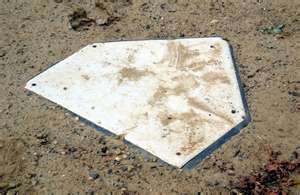
Pitcher's Property
Baseball Pitching Tips
You may be questioning where I’m going with this. What I’m about to illustrate is to be a Good or hopefully Great pitcher requires more than physical skill, for no matter how many skills you possess, on certain days a portion of them will abandon you.
Why a major league pitcher can throw a two hit shutout on Monday and be pulled in the 4th inning after allowing 8 earned runs on Friday, is a mystery nobody can actually figure out. Some days your fastball is clocked at 90 mph with movement, some days it registers 87 mph and is flat. Same with your curve ball, which instead of breaking down and away, hangs high right in the batters eyes.
It happens. Great pitchers realize this “physical” fact of life, but without panicking revert to their mental strategy to compensate.
Baseball Pitching Strategy
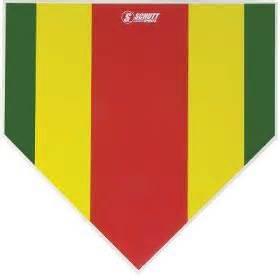
Baseball Pitching Tips
Pitch Location Target Guide
Owning Real Estate: Baseball Pitching Tips
Home plate measures 17” across at the front, and widest part of the plate. Imagine, if you will, the Middle 5” of the plate has an invisible force field, which catches the ball and holds it in position, much like a batting tee, for the batter to hit. Obviously as a pitcher, you do want to throw the ball into that 5” zone.
However, the 6” inches on either side of the 5” middle also contain an invisible force field, but this force field grabs the baseball and accelerates it past the batter. Obviously, this is where you want to locate your pitches.
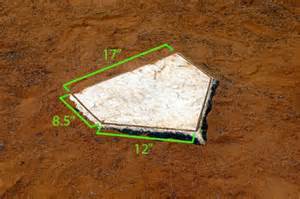
My Force Field scenario may not be the perfect visual example of what I’m trying to illustrate, but the bottom line is You’ll concede the Batter owns the middle 5” of the plate, but you own the rest of the plate.
It’s the ability to consistently work the ball in and out and up and down within these two 6” sections, which will make you a great pitcher.
Certain No-No’s: Baseball Pitching Tips
Ever wonder why an MLB manager will bring in a left handed relief pitcher to face a left handed hitter ? There are several reasons based on percentages, but the Main reason is, a Left Handed Pitcher, because it’s physically difficult, will not throw a pitch in the Left Handed Batter’s Power Hitting Zone.
Clickbank Products
And where might that be and why? A pitch which is Down and Inside to a left handed hitter is the Danger zone, because this pitch allows the batter to use every bit of his hitting power.
A. He can fully turn his hips for explosive power.
B. He can Naturally drop the bat head through the hitting zone as he swings which puts the Sweet Spot on the ball.
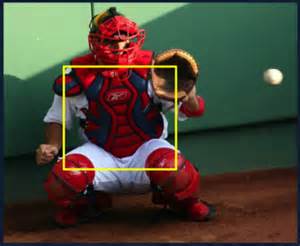
Baseball Pitching Tips
Barely Out Of The Strike Zone
I’m not implying as a right handed pitcher you are afraid of a lefty, not by a long shot, it’s just you must be aware of this danger zone in order to avoid it. In fact, a Wiley pitcher will use this danger zone to his benefit, by throwing pitches inside and down, which is like offering candy to a baby, but the pitch location will be 2” in off the plate and down. In other words you’ll entice the batter to swing at a ball, not a strike.
Another example of a No-No is throwing a ball on the outside part of the plate to batter who stands far off the plate and steps, or perhaps lunges, towards the outside of the plate.
Let’s exam this. Most batters have been taught when positioning themselves in the batters box, to extend the bat out over the plate to insure they can hit a pitch on the outside part of the plate.
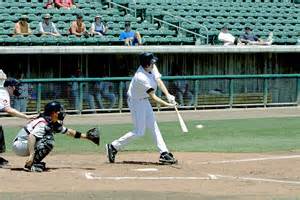
Missing Low & Away
As the pitcher you watch a batter who digs in positioned several inches farther away from the plate than normal, doesn’t matter if he’s left or right handed.
Your first instinct would be to pitch the batter away, because in a normal swing, he can’t reach the outside corner of the plate with the bat. However, danger may lurk in this picture. Assuming the batter is a good hitter, say number 1 through 6 in the batting order, he isn’t conceding the outside portion of the plate to you, as the pitcher.
More than likely he is a slap hitter, sometimes with some pop in his bat, who likes to hit to the Opposite Field. His hands are quick enough to pull an inside pitch, but he prefers to be able to Fully Extend his arms when swinging.
By throwing a pitch on the outside part of the plate, you enable him to step into the pitch, ( hit the ball where it’s pitched ) and fully extend his arms, driving the ball to the opposite field off the sweet spot of the bat.
Again, as with the left handed batter’s power zone, you can exploit this type of hitter by locating your pitches 2” - 3” off the outside of the plate and either up or down. The hitter sees a pitch he thinks he’s looking for, but when he swings, he in fact can not reach the ball because it’s off the plate.
Pitching Strategies: Baseball Pitching Tips
The amount of situations and strategies are infinite, depending on the hitter, what pitch is working for you and etc. etc, but there are a few which are basic and you as a Good pitcher, must learn to utilize.
Above The Hands Fastball = Foul or Fly
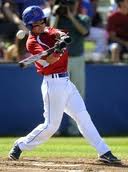
Climbing the Ladder: Baseball Pitching Tips
Your fastball is good today and you are throwing to a batter who is over matched and can not catch up to the pitch. Here is one possible strategy.
1. Throw fastballs only. There’s no since in getting cute and throw a curve ball or change up, which the batter may make contact with, when it’s obvious he’s over matched with your fastball.
2. Work the plate in and out getting a two strike count. 1-2 or 0-2. Throw a fastball down the middle of the plate chest high for the strike out.Down the middle ??? In the batter’s mind, with two strikes, a ball down the middle will force the batter to swing because it’s a strike, whether it is or not.
The pitch will be in his eyes, which will appear to be a beach ball approaching, but the speed of the ball and the fact the ball is located Above his hands … he’ll never be able to hit it.
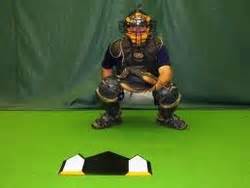
Learn To Set Up Off The Plate
Fastball .. Fastball … Curve Ball … Fastball - Baseball Pitching Tips
1. Identical to the above scenario, you have an 0-2 or 1-2 count. For the third pitch you throw a curve ball. However, you never throw the curve ball for a strike!!
You have gotten 2 strikes on the batter with fastballs, he’s inclined to believe another fastball is coming and he’s anxious as he has a 2 strike count. The curve ball in the dirt, which will initially appear to be a fastball, will be nearly impossible to not swing at, and if he does make contact .. It’ll be a blooper in the infield.
2. Sometimes you do your job too well and the curve ball totally freezes the batter and he’s unable to swing. You have lost the element of surprise, go ahead and strike him out with the fastball. Remembering Nothing Down The Middle.
When To Get The Out: Baseball Pitching Tips
As a pitcher you already know the number 1 goal of pitching. Get Ahead In The Count !! If you can consistently pitch ahead in the count, whether you have your good stuff or not, you’ll have a Huge advantage over the hitters.
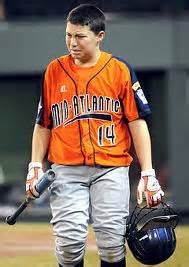
Outfoxed
The Second goal of pitching is: on a 1-2 or 2-2 count, the Next pitch is your out pitch. At a 1-2 count, the Pitcher has an overwhelming advantage, at a 2-2 count neither you or the batter have an advantage and at a 3-2 count, the batter has gained the advantage over you.
*** Word of caution: If you are consistently starting out ahead in the count, only to fall behind, you are trying to be Too fine with your pitches. Sometimes when a pitcher gets 2 strikes, he develops the mentality that he’s not going to allow a 2 strike hit. He then begins nibbling at the corners, attempting that Perfect pitch, only to get into trouble.
There’s nothing wrong with throwing the perfect pitch, but 99% of the time it’s not required and trying to be too fine can be bad.
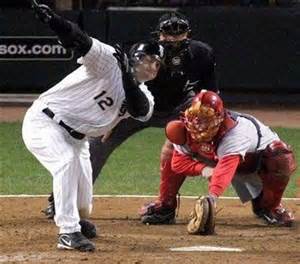
Developing Pitching Strategy: Baseball Pitching Tips
Developing a pitching strategy is one thing … being able to implement it is another. The only way to become a good pitcher is Practice .. Practice .. Practice.
Obviously throwing to a real catcher while facing a real batter, who is not swinging, is the most real life scenario for developing your skills, but that situation doesn’t present itself very often. So, what to do.
There are numerous types of targets manufactured by many companies, which lend to a visual effect of throwing. I strongly suggest using one of these visual targets as it engrains a picture in the mind’s eye of the situation.
In other words, you can throw to a plastic tarp with a target zone on it and become quite accurate. But until you face the actual situation enough for the mind to automatically transpose the tarp to the batters box, you’re at a slight disadvantage of not being able to visualize the event.
If possible, use a target which represents the actual scene, create a situation and pitch to that situation. For instance, if you practice a 100 times of a 3-2 count and you proficiently throw a breaking ball for a strike, you’ll perform the exact task in real life a large percentage of the time.
It’s no different than an infielder anticipating a ground ball or a hitter anticipating a fast ball, etc. Practice for that scenario and you’ll perform quicker and better than trying to analyze what to do as the situation unfolds in front of you.
This is but a small example of using a pitching strategy to become a good pitcher. Changing speeds, varying release points and etc. are also examples we’ll exam in other lessons.
Baseball Pitching Tips Back To Learn to Pitch

New! Comments
Have your say about what you just read! Leave me a comment in the box below.